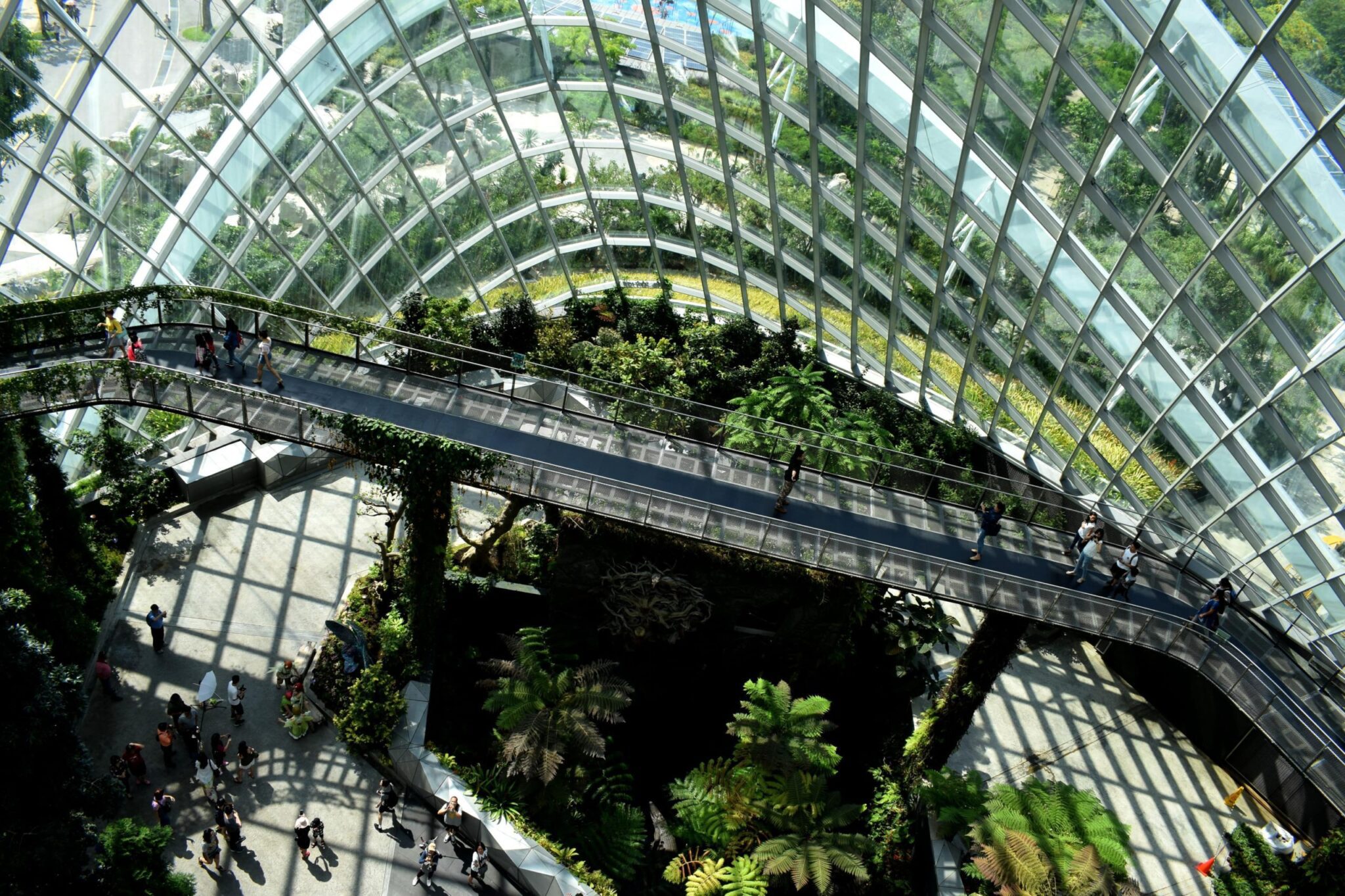
COP26: a call to arms for real estate. Can we rise to the challenge?
Posted:
11 / 12 / 2021
Tagged:

The first few weeks of November saw global leaders gather in Glasgow for COP26, forcing us to consider the harsh realities faced by the planet, and acknowledge the responsibility the built world has to lessen its impact on the natural world. As Boris Johnson stated: “It’s one minute to midnight on the doomsday clock, and we need to act now.”
Back at COP21, the Paris Agreement of 2016 saw a legally-binding international treaty on climate change adopted by 196 Parties – all countries involved agreed to limit the global temperature increase to below 2°C /35.6°F. But we still have some pretty steep climate targets to meet if we’re to achieve that goal.
As an industry, real estate is responsible for 38% of global carbon emissions, and consumes around 40% of the world’s energy (according to the UN Environmental Programme). So, real estate has an exceptionally important part to play. There are huge opportunities for landlords and developers to make real and lasting positive change that’ll benefit both the building users of today, and the generations of tomorrow.
Net zero or nothing:
Finance, as a heavily regulated, heavily audited industry, is set to place pressure on real estate to strive for net zero. New rules in the UK, for example, are set to force all UK-listed companies to go green, and funding for buildings without a net zero plan could dry up in as little as two years – Guy Grainger, Head of Sustainability at JLL, starkly warned at the recent CREtech event.
To comply with emerging Environmental Social and corporate Governance (ESG) requirements, investors are set to rush to factor new ESG realities into decision making, with some $8 trillion estimated as the budget needed to retrofit buildings throughout Europe alone. Alleviating the uncertainty that currently shrouds the real estate investment market requires policy makers to agree on actionable and pragmatic targets, and support a benchmarking strategy that enables the reallocation of both capital and skills.
On the other side of the equation, tenants are voting with their feet. For 63% of office workers, working within an environmentally sustainable office is very important, and as many as one fifth would point blank refuse to work in an unsustainable building.
People want sustainable places to work. From large corporates to small operations, there exists universal demand for landlords to provide sustainability and energy data. As one multi-billion global corporate told WiredScore “Investors and landlords need to know that if they are not net zero, they won’t exist in a couple of years.”
So, what’s the solution?
As Sir David Attenborough told the COP26 conference delegates: we are the “great solution finding species”, and thus we must find the solution, sharpish. However, it’s arguable that the solutions have already been found, it’s just a matter of implementing them…
Currently, the real estate industry almost exclusively focuses on ‘operational’ carbon, rather than ‘embodied’ carbon: “We need to think about where our materials come from, how they’re made and interrogate the whole supply chain” Joe Giddings, co-ordinator of the Architects Climate Action Network.
Operational carbon refers to day-to-day building use (ie: lighting, heating and cooling), whereas embodied carbon refers to the emissions created during the manufacturing of construction materials, and the construction process itself.
It’s true of the majority of developments that concrete and steel are essential components. This is somewhat problematic for real estate, as the production of both materials is highly pollutant. To lessen the burden these essential materials place on our planet, we must find better ways to produce them.
As far as concrete’s concerned, we can replace traditional concrete (which accounts for up to 8% of global carbon emissions) with a new, low-carbon concrete substitute. Geopolymer (low carbon) concrete is a 96% recycled material, made from waste generated by the mining, quarrying, metallurgy, water purification, incineration and agricultural industries. Creating concrete from recycled waste materials presents a neat solution to the hard problem of concrete, as it currently stands.

Concrete accounts for 8% global carbon emissions.
As far as concrete’s concerned, we can replace traditional concrete (which accounts for up to 8% of global carbon emissions) with a new, low-carbon concrete substitute. Geopolymer (low carbon) concrete is a 96% recycled material, made from waste generated by the mining, quarrying, metallurgy, water purification, incineration and agricultural industries. Creating concrete from recycled waste materials presents a neat solution to the hard problem of concrete, as it currently stands.
And then there’s steel. Steel comes from iron, and iron comes from iron ore. The process of extracting iron and then turning it into steel is lengthy and, until recently, highly carbon expensive. Steel production accounts for 7% of global greenhouse gas emissions – a concerning statistic as, according to some estimates, global demand for steel is set to nearly double by 2050, meaning a sustainable alternative is imperative.
New developments in the iron production industry known as Hydrogen Breakthrough Ironmaking Technology (or HYBRIT, as its Swedish creators christened it) replaces carbon with hydrogen. The by-product of hydrogen ironmaking is water, rather than carbon dioxide, establishing a far cleaner, fossil free process.
The challenge here is that ‘green iron’ is far from widespread production. It also comes at a higher price, as the ‘green tax’ is added on top of the usual cost. Unless the market demands green steel, and unless governments are able to provide financial support for green suppliers, then green steel will never be the developer’s choice.

Steel production accounts for 7% of global greenhouse gas emissions.
And then there’s steel. Steel comes from iron, and iron comes from iron ore. The process of extracting iron and then turning it into steel is lengthy and, until recently, highly carbon expensive. Steel production accounts for 7% of global greenhouse gas emissions – a concerning statistic as, according to some estimates, global demand for steel is set to nearly double by 2050, meaning a sustainable alternative is imperative.
New developments in the iron production industry known as Hydrogen Breakthrough Ironmaking Technology (or HYBRIT, as its Swedish creators christened it) replaces carbon with hydrogen. The by-product of hydrogen ironmaking is water, rather than carbon dioxide, establishing a far cleaner, fossil free process.
The challenge here is that ‘green iron’ is far from widespread production. It also comes at a higher price, as the ‘green tax’ is added on top of the usual cost. Unless the market demands green steel, and unless governments are able to provide financial support for green suppliers, then green steel will never be the developer’s choice.
What’s next?
The possibility of what Attenborough termed a “wonderful recovery” is tantalizing, but the road to recovery is rarely smooth. Recovering to full strength involves hard work and determination. As one does not recover from a broken leg without pushing through the pain of walking on it agin, the world will not recover from climate damage without us shifting our age-old habits in uncomfortable ways.
Global collaboration across economies and geographies in a property-specific context is absolutely necessary. Landlords and occupiers must work together to deliver upon ESG goals, and rather than ‘offsetting’ carbon, it must be reduced in the first instance. For offsetting (no matter how well-meaning) does not deal with the route source of the problem: highly inefficient buildings.



